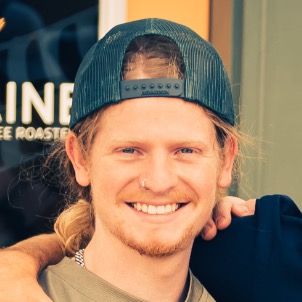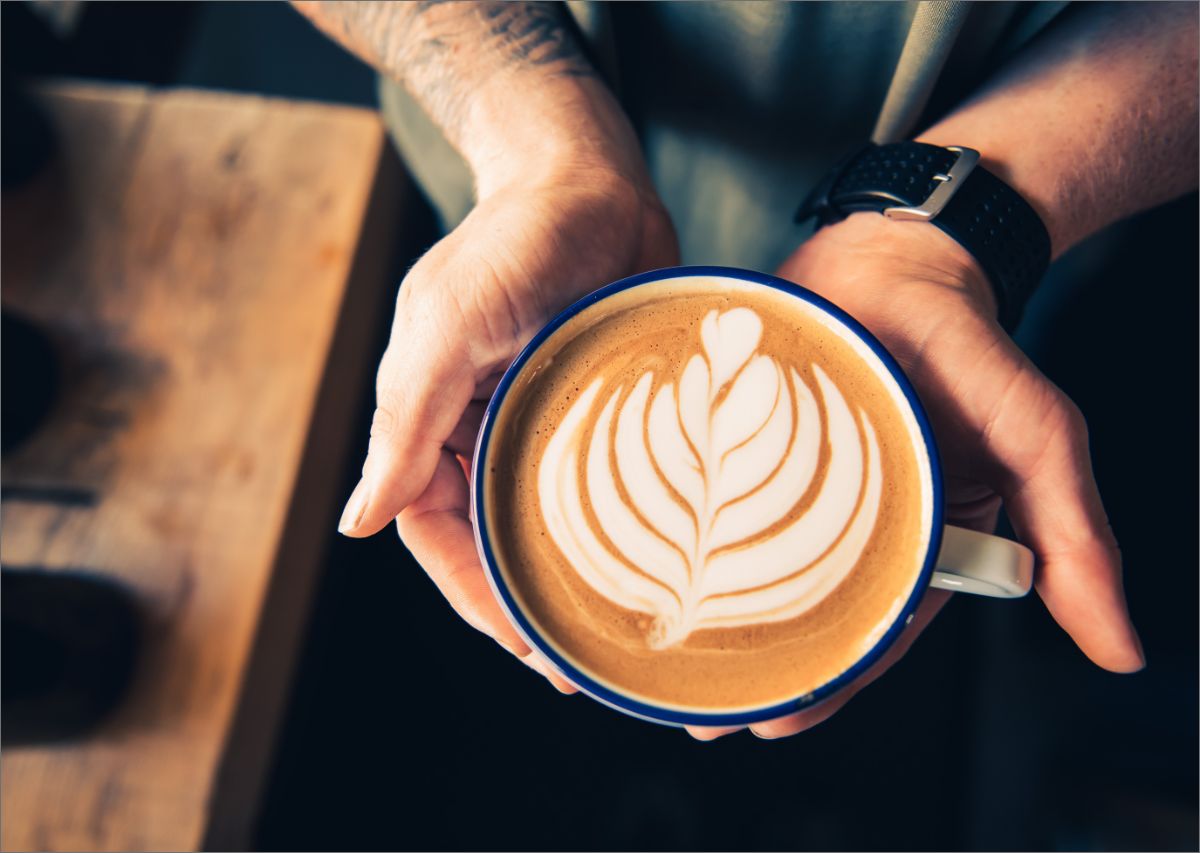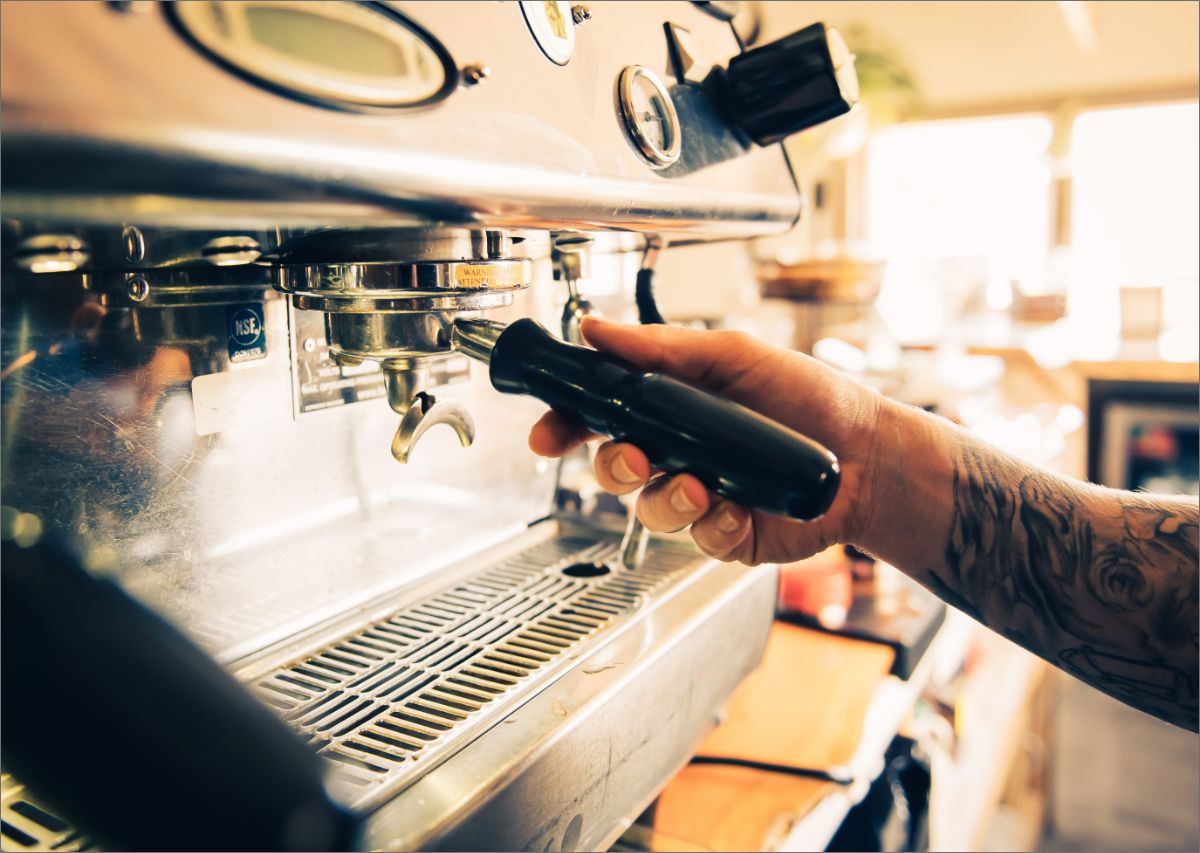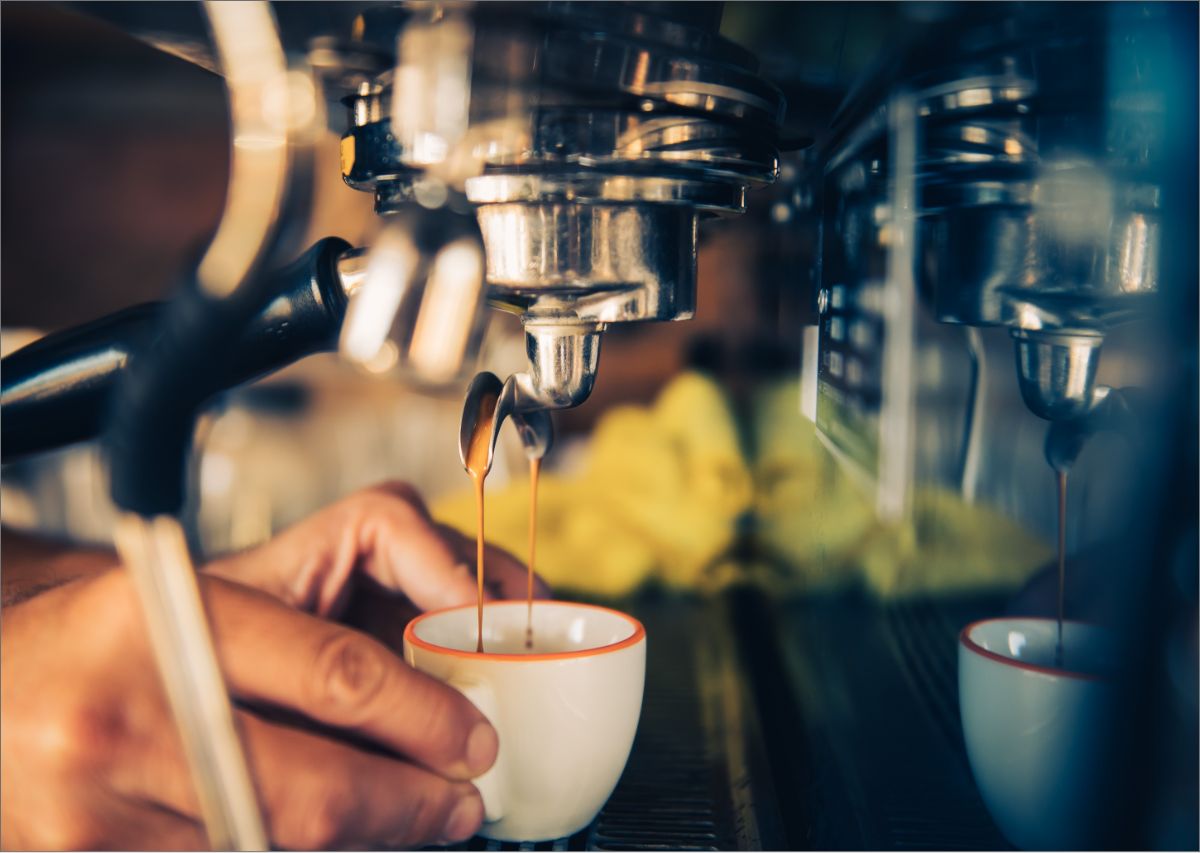Part 1
What Is Espresso?

Conner Kusturin
Managing Barista
When you’re walking into a coffee shop, you see many drinks up on the menu board. You sort of have an idea of what’s in those different drinks—or maybe you don’t. That’s okay! If you’ve ever ordered a latte, you’ll know it’s milk paired with a balanced double shot of espresso. (Now this can vary at shops, depending how they practice… we will dive into this at a later time.)
But what is espresso exactly?
From my perspective as a professional barista, I’d like to share with you what it is without using jargon that makes absolutely no sense. Then you’ll be able to explain to friends and family. Maybe you’ll want to take your new-found knowledge a bit deeper and be inspired to buy an espresso machine for your house, try a different variety of espresso-based drinks, or even take the leap and apply for a barista position at your local craft coffee shop!

Photograph by Steve Willis
Espresso Defined
The elusive coffee type that you’ll find in many craft coffee beverages consists of very finely ground coffee beans hit with water under immense pressure. Combined, this is called an espresso shot.
First the beans… There is no such thing as an espresso bean. All coffee on our shelf can be made into an espresso shot even though we have a bag of beans we have catered for espresso. What translates here is that one coffee may taste phenomenal on an espresso machine, but another coffee may be way too acidic to be as awesome as it could be compared to maybe how it would taste as drip. So that’s what’s really going on when you see a bag that says espresso blend. That roaster made a blend of coffee that they think works best on espresso. Our current espresso blend is Timberline. This coffee has three different components: Colombia, Guatemala and Honduras. (You may have noticed we’ve sold these individually as single origins versus in an espresso blend.)
The Espresso Machine
Remember, espresso needs pressure. The purpose of the espresso machine is to build pressure, and there is a lot of pressure inside of the machine. As you know, the earth has natural pressure on the surface where we all live, and scientists gauge this by a measuring system called bars. The earth’s surface has a natural bar pressure of 1, which isn’t a whole lot but thankfully it keeps us on the ground versus floating away! Now we know the earth has natural pressure, “How much does an espresso machine have,” you may ask? An espresso machine operates at 9 bars, which is equivalent to 4X the pressure in a car tire or 130 PSI (pounds per square inch)! That’s a lot of pressure in an espresso machine! Actually, it’s quite awesome to think about when I’m making coffee. Espresso is an art, and it opens up different opportunities for coffees in such unique ways. A Colombian coffee can have such a vast spectrum when brewed as espresso instead of just drip. It’s fun to try coffee in the different ways to see where it shines the best.

Photograph by Steve Willis
This was a quick introduction into espresso, which still may seem like a lot of information; but I hope you learned something new or maybe it led to more questions we can dive into together. Look for my next post: “Is Espresso complicated?” where we’ll break down all the factors we deal with on a daily basis and discover why espresso really is an art—that you can learn too.
Devoted to the Journey,
Conner Kustuirn


0 Comments